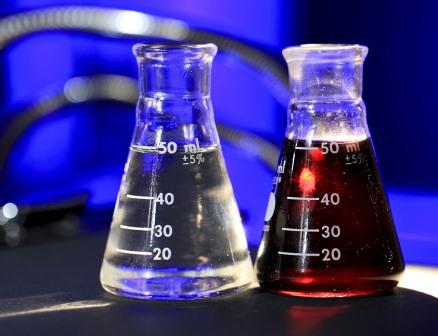DISTINCTION BETWEEN COMPOUNDS AND MIXTURES
DISTINCTION BETWEEN COMPOUNDS AND MIXTURES The following example of iron, sulphur and iron sulphide will make us understand the difference between mixtures and compounds. Properties of Iron and Sulphur The following experiment shows the difference in properties between the elements iron and sulphur. Preparation of a Mixture of Iron and Sulphur Take about […]
DISTINCTION BETWEEN COMPOUNDS AND MIXTURES Read More »
